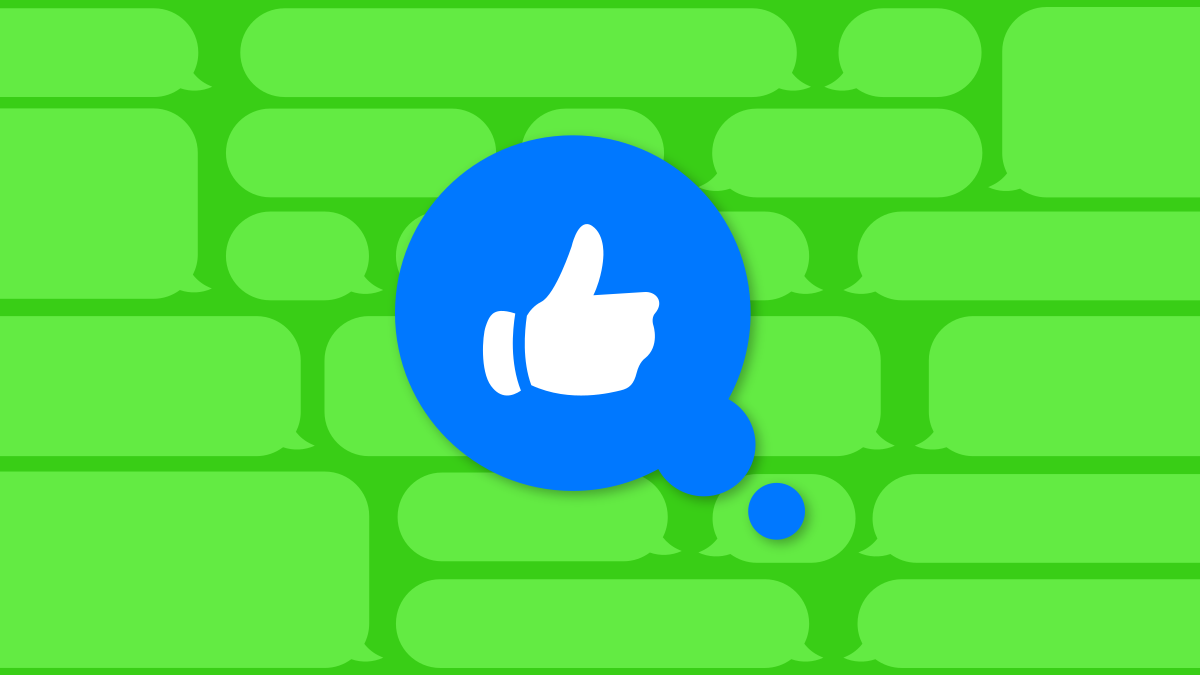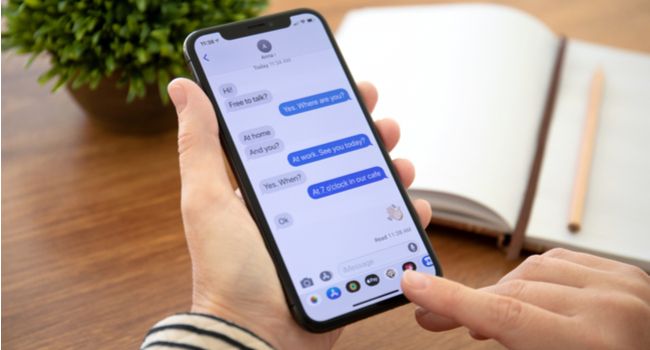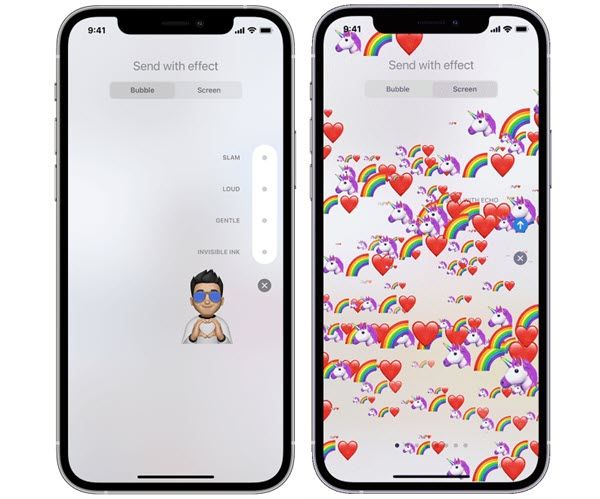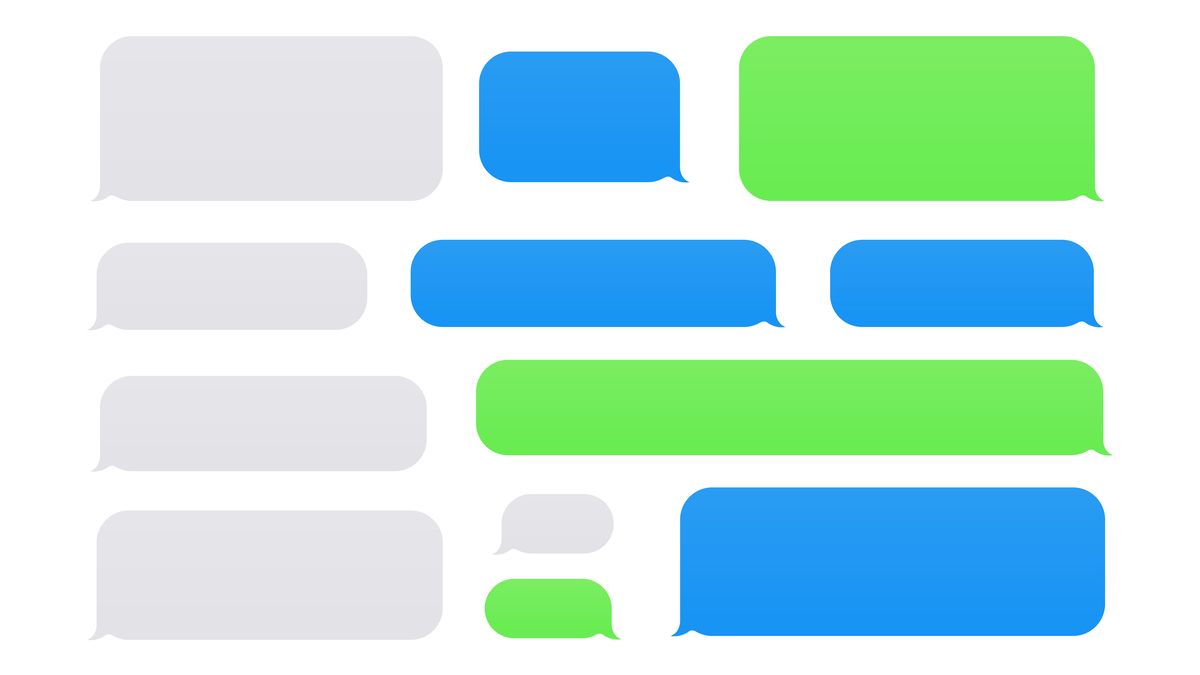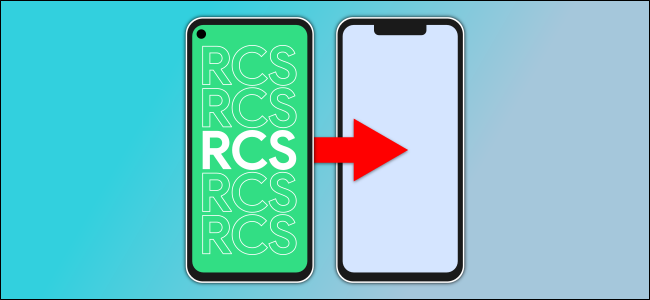Quick Links
As a long-time Android user, I have a confession to make. I like iMessage. I never understood why it was a big deal, but I almost immediately realized how wrong I was. You might be underestimating it too.
I thought I understood why iPhone users loved iMessage so much. The closest equivalent for Android is RCS, which does improve text messaging a lot. But iMessage is much more than just better SMS, and it's not only about blue and green bubbles.
My History With iPhones
First, I want to explain my perspective. I've been using Android devices for over a decade. In that time, I've had a couple of iPhones, but they were never my primary device. Meaning I never put my SIM card in and actually used one for texting and calling.
This has resulted in me having a pretty good understanding of how iOS works, but no experience with one of its biggest features---iMessage. As a bit of an experiment, I decided to finally truly use an iPhone for a while, SIM card and all.
For the first time in my life, I am texting as a blue bubble person and it's been very interesting to observe from the opposite side.
iMessage Is Not SMS
Let's talk a little bit about how iMessage actually works. I was under the assumption that iMessage was basically just a fancy version of SMS---similar to RCS---but it's really completely different than both of those standards.
A more equal comparison for iMessage would be Facebook Messenger. You can message anyone with a Facebook account and the messages, photos, and videos are sent over Wi-Fi and data. They don't count toward your wireless plan's allotment of text messages.
Like Facebook Messenger, this allows iMessage to have a bevy of features that are simply not possible with SMS or RCS. Messages send much faster, you can "react" to messages, send money, and tons of other fun effects enhance the experience.
To some of you, this probably sounds very obvious. Of course iMessage isn't SMS. I knew how iMessage worked on a technical level, but that doesn't tell the whole story.
What Makes iMessage Great
As a first-time iMessage user, I immediately found a lot to like. My iMessage Sherpa showed me things like the "Bubble" and "Screen" text effects, which are super fun. Of course, the infamous reactions are great too. They provide an easy way to respond without actually saying anything.
Sending photos and videos is much nicer with iMessage as well. Media sends faster since it works over Wi-Fi and data, and the quality is better too. On the technical side, the fact that iMessage has end-to-end encryption is a nice bonus. Little things like being able to see when the other person is typing are nifty too.
In general, that's what makes iMessage great. It's not just "Fancy SMS," it's essentially a full-blown instant messaging app without all the drawbacks of a standalone app. You don't have to download it from the App Store or convince your friends to switch. It simply works with the same phone number you've had forever.
However, that feeling of using an instant messaging app is precisely where all the problems with iMessage come from. Specifically, the green bubbles situation, and it's not as simple as iPhone vs Android.
Why Green Bubbles Feel Invasive
Many things have been said and written about blue and green bubbles on the iPhone. Messages that are not sent over SMS retain the original green color, while iMessages are blue. So what's the big deal?
My experience with the situation had only been from the perspective of a green bubble sender. I'd heard my fair share of grumblings from iPhone friends, but I never cared. It wasn't my problem. Being on the receiving end of the green bubbles is a very different perspective.
It's not simply a matter of "oh this person doesn't use an iPhone so they're lame." That elitist mentality certainly still exists and it's how I always perceived the complaints when I was the green bubble, but there's more to it.
A phone number is a lot like an email address. Once someone has it, they can pretty much contact you from whichever email service they use. That same concept is why green bubbles feel invasive. iMessage takes a universal standard like email addresses---in this case, your phone number---and turns it into an "app."
However, the big difference between iMessage and instant messaging apps is who can contact you. Only Facebook users can message you on Facebook Messenger, but anyone can text your phone number. So you've got a situation where iMessage feels like an instant messaging app and that makes green bubbles feel like messages from an external, incompatible app.
It's Apple's Fault
We always like to have someone to blame, so who can we point to for all of this? iPhone users blame it on Android users. Meanwhile, Android users blame it on iPhone users. Both sides are annoyed by the situation.
Well, I hate to break it to you, iPhone users, but this is all Apple's fault. Apple took a universal method for communication---phone numbers---and made it platform-dependent for its own gain. To make matters worse, Apple doesn't want to adopt the more modern RCS standard for fallback when iMessage isn't used.
In reality, iPhones are the devices using outdated standards of communication. Photos and videos from green bubbles don't look bad because they came from Android phones. They look bad because Apple is forcing them to SMS instead of RCS, which supports high-quality media---along with other features---just like iMessage.
Apple doesn't have to abandon iMessage to support RCS. It can continue to have iMessage with all of its great features for iPhone users while making green bubble texts a better experience for both sides. Google is doing its part to clean up Apple's mess, but Apple doesn't want to cooperate.
iMessage makes me want to actually text people, whereas on my Android phones it's always felt like a last-resort method for contacting someone. I think that's the big thing I didn't appreciate about iMessage. It really is more than simply SMS with extra features, both functionally and spiritually.
Still, I don't like that Apple is actively making the situation worse than it needs to be. iMessage is good enough to stand on its own. Apple doesn't need to be running this subliminal attack campaign against non-iPhones to make it seem better. Messaging can be good for everyone, no matter the color of their bubble.

